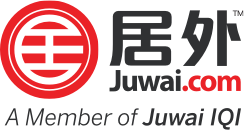China is home to 710 million internet users – 92.5% who go online via smartphones and mobile devices.1
That’s a massive population of 656.8 million mobile netizens in a single country1 – more than any other country in the world.
Additionally, with 91% of China’s ultra-rich going online every day – most who consider social media as their preferred source of information2 – social media is no doubt pivotal in securing success for your China market strategy.
However, while the China online market presents massive potential for international agents, China’s Great Firewall – and its convoluted social media landscape – remain both a mystery and a bane for many. After all, it’s hard to sell to Chinese buyers when your website and usual social media channels – such as Facebook and Twitter – are blocked and invisible to them.
That said, there are Chinese social media platforms that are arguably even more powerful with Chinese buyers than Facebook and Twitter. Here are three top Chinese social media apps to capitalise if you’re new to China’s social media landscape:
#1 WeChat
As China’s equivalent to Whatsapp, Tencent’s WeChat still reigns supreme as China’s #1 mobile chat app, boasting over 762 million monthly active users (MAUs) as of Q1 2016.3 Better known as ‘Weixin’ in China, WeChat provides innovative features – Official Accounts, WeChat Payment, Moments, Loyalty Card, etc – that are superb for consumer engagement and influencer marketing.
#2 QQ
QQ is Tencent’s older instant messaging brainchild before the birth of WeChat. Best used for email marketing via its QQ Mail or for leveraging fan and follower networks with its social graph data offering, QQ’s MAUs is now at 877 million as of Q1 2016, while Mobile QQ – its mobile version – hit 658 million MAUs in the same period of time.3
#3 Sina Weibo
Sina Weibo is China’s answer to Twitter but with way more functionality. Ideal for brands hoping to drum up direct communication to connect with Chinese consumers, Weibo is a powerful channel for impactful interaction and information dissemination via discourses, debates, and feedback.4 Currently, Weibo has 261 million MAUs as of Q1 2016.5



